Amaryllis plants, with their vibrant trumpet-shaped flowers, are a favorite among plant enthusiasts, especially during the winter months. For those who already own an amaryllis and want to master its care for consistent, stunning blooms, this comprehensive guide provides advanced seasonal care practices. We’ll cover planting, seasonal transitions, bloom timing (particularly for Christmas), watering schedules, post-bloom recovery, dormancy, and re-blooming techniques, ensuring your amaryllis care thrives year after year.
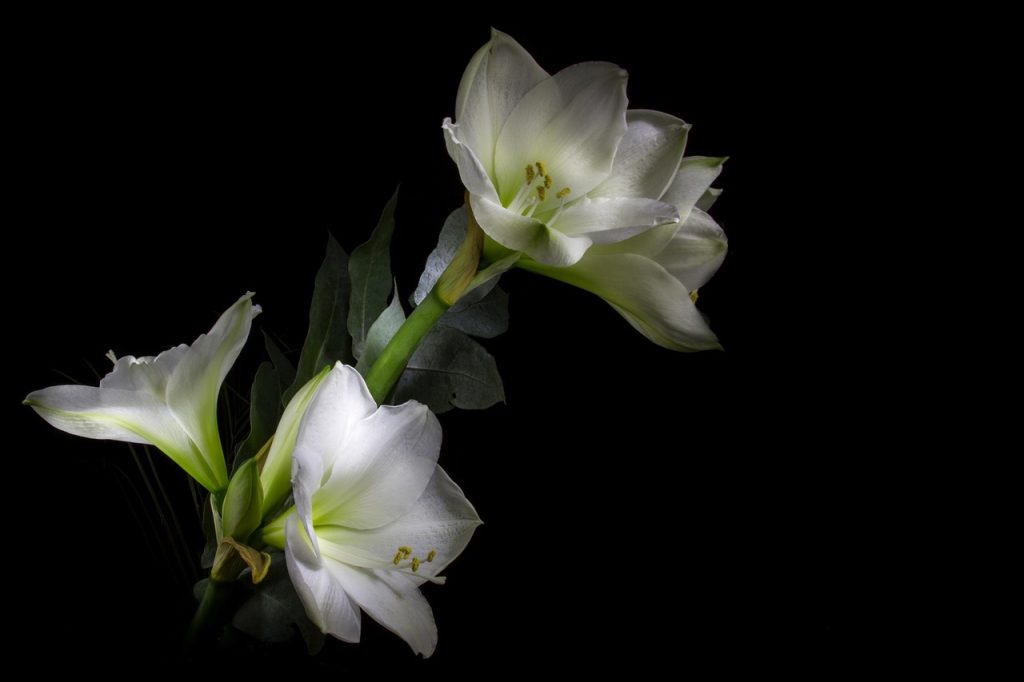
Planting Amaryllis Bulbs: Setting the Stage for Success
Proper planting is the foundation of effective amaryllis care. Here’s how to get it right:
Choosing a Healthy Bulb
Select a large, firm bulb free from mold, soft spots, or decay. Larger bulbs, often 3-4 inches in diameter, produce more flower stalks and blooms, making them ideal for a spectacular display. Check for slight growth at the tip, which indicates vitality.
Pro Tip: Larger bulbs (34-38 cm circumference) can produce up to three stems with 4-5 flowers each, enhancing your display American Meadows.
Preparing the Bulb
Before planting, soak the bulb’s roots in lukewarm water for 2-6 hours to stimulate root growth. This step enhances establishment, especially for bulbs stored from previous seasons.
Warning: Avoid soaking the entire bulb, as this can lead to rot.
Selecting the Pot and Soil
Amaryllis bulbs prefer a snug fit, so choose a heavy pot (to prevent tipping) that’s 1-2 inches wider than the bulb’s diameter, with drainage holes. A 6-8 inch pot is ideal for a single bulb. Use a well-draining potting mix, such as equal parts potting soil, peat moss, and perlite, to ensure proper aeration and moisture control.
Seasonal Note: In USDA zones 8-11, amaryllis care can be planted outdoors year-round, but indoor potting is standard for most climates Longfield Gardens.
Planting Depth and Initial Care
Plant the bulb with the pointed end up, ensuring the top third remains above the soil line to prevent rot. Water thoroughly after planting, then wait until the top inch of soil is dry before watering again. Place the pot in a bright, indirect light location with temperatures between 65-75°F (18-24°C). Insert a bamboo stake near the bulb at planting to support future flower stalks without risking bulb damage.
Pro Tip: Rotate the pot every few days to ensure even growth, as amaryllis stalks tend to lean toward light.
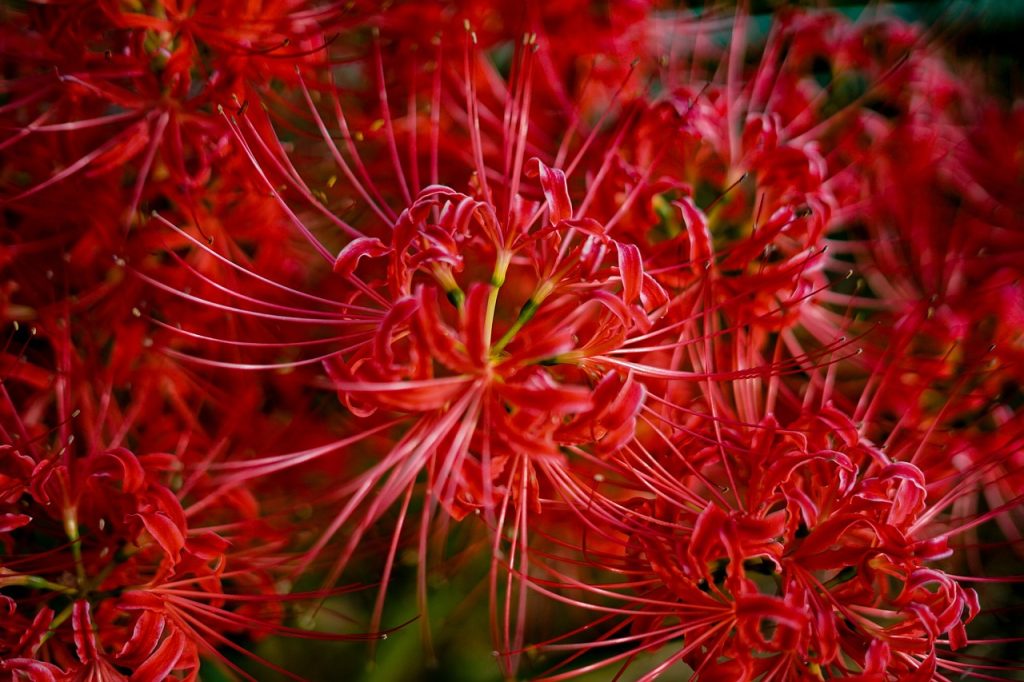
Seasonal Amaryllis Plants Care
To care for your amaryllis plant effectively, tailor your approach to its seasonal needs. Below is a detailed guide for each season.
Spring: Post-Bloom Recovery and Energy Storage
After your amaryllis finishes blooming, typically in late winter or early spring, focus on recovery to prepare for the next cycle.
- Remove Spent Flowers: Snip off faded flowers where they meet the stalk to prevent seed formation, which drains energy Illinois Extension.
- Cut Back Stalks: Once the flower stalk yellows, cut it 1-2 inches above the bulb, leaving the leaves intact.
- Maintain Leaves: The strap-like leaves are crucial for photosynthesis, storing energy in the bulb for future blooms.
- Light and Water: Place in a south-facing window or other sunny spot. Water when the top inch of soil is dry, and fertilize monthly with a balanced houseplant fertilizer (e.g., 10-10-10).
Warning: Cutting leaves prematurely can weaken the bulb, reducing future blooms.
Summer: Promoting Vigorous Growth
Summer is the active growth phase, where the amaryllis builds energy for the next blooming season.
- Outdoor Option: After the last frost (late May in many regions), move the pot outdoors to a partially shaded area with morning sun and afternoon shade. Acclimate gradually over 7-10 days to prevent leaf burn.
- Watering and Feeding: Keep soil moist, watering weekly or when the top inch is dry. Fertilize every 2-4 weeks to support leaf growth.
- Monitor Health: Check for pests like aphids, which can affect spring blooms if present BBC Gardeners World.
Pro Tip: In warmer climates, partial shade prevents leaf scorching, while cooler regions can tolerate more sun.
Fall: Inducing Dormancy
Dormancy is critical for re-blooming, and fall is when you prepare your amaryllis for this rest period.
- Stop Watering: In late summer or early fall (August-September), cease watering to allow leaves to yellow and die back naturally.
- Trim Foliage: Once leaves are fully brown, cut them to 1 inch above the bulb.
- Store the Bulb: Place the pot in a cool, dark, dry location (50-60°F, 10-15°C) for 8-12 weeks. A basement or garage is ideal UMN Extension.
Warning: Do not store bulbs near apples, as ethylene gas can sterilize them Amaryllis & Caladium Bulb Company.
Winter: Reawakening and Blooming
After dormancy, it’s time to coax your amaryllis care back to life for winter blooms.
- Bring to Light: In early November (for Christmas blooms), move the pot to a warm (70°F, 21°C), bright location.
- Resume Watering: Water sparingly until 2 inches of new growth appear, then water regularly when the top inch is dry.
- Support Growth: Use the stake to support emerging flower stalks, and rotate the pot for even growth.
Seasonal Note: If blooms don’t appear, the bulb may need more energy from a longer growth period or a larger size.
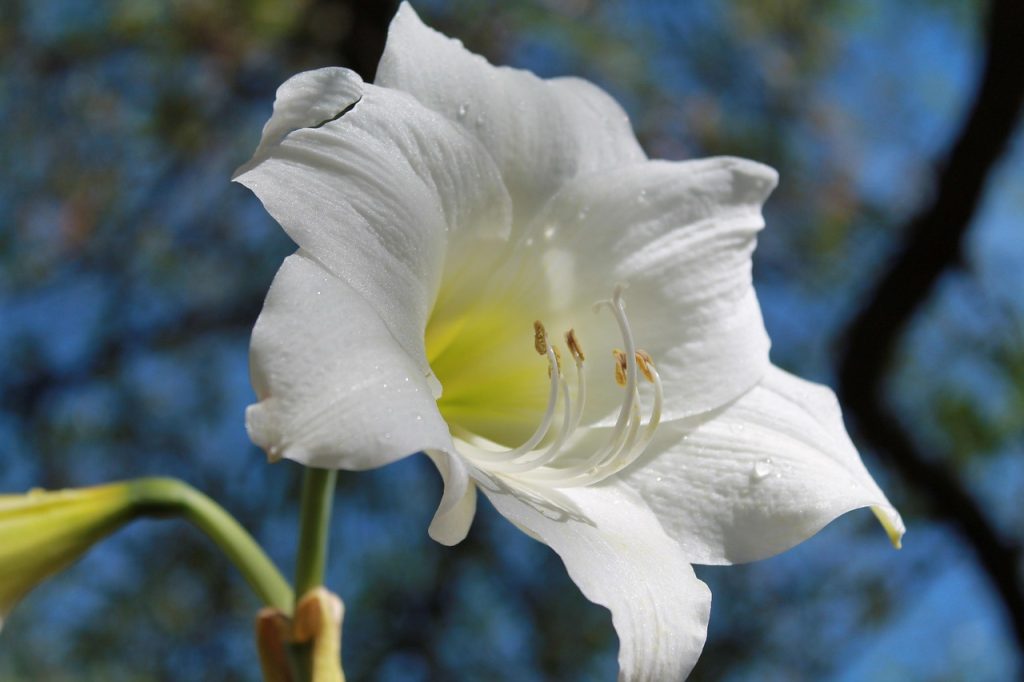
Bloom Timing: Forcing Amaryllis for Christmas
Timing your amaryllis to bloom for Christmas requires precise planning, especially for existing bulbs.
For Existing Bulbs
- Start Dormancy: In late August or early September, stop watering to induce an 8-12 week dormancy period.
- Store Properly: Keep the pot in a cool, dark place (50-60°F).
- Reawaken: In early November, bring the pot to a warm, bright room and water lightly. Blooms should appear by late December, 6-8 weeks later Mother Nature.
For New Bulbs
- Plant in November: For Christmas blooms, plant new bulbs in early to mid-November, as they typically bloom 6-8 weeks after planting Northern Gardener.
Pro Tip: South African amaryllis varieties may bloom slightly earlier than Dutch ones, so check variety specifics when planning Gardening With What You Have.
Amaryllis Care Calendar
| Month | Action |
|---|---|
| January-February | Enjoy blooms, cut back flower stalks |
| March-August | Grow leaves, water and fertilize, move outdoors in summer if possible |
| September-October | Stop watering, store in cool, dark place for dormancy |
| November-December | Bring to light, resume watering, wait for blooms |
Watering Schedules
Watering is a critical aspect of amaryllis care, varying by growth stage:
- Active Growth (Spring-Summer): Water when the top inch of soil is dry, ensuring good drainage to prevent rot. Typically, this means watering every 5-7 days, depending on indoor humidity and temperature.
- Dormancy (Fall): Do not water. Keep the bulb dry to avoid mold or rot.
- Post-Dormancy (Winter): When reawakening, water sparingly (once every 1-2 weeks) until 2 inches of growth appear, then resume regular watering.
Warning: Overwatering is a common cause of bulb rot. Always check soil moisture before watering.
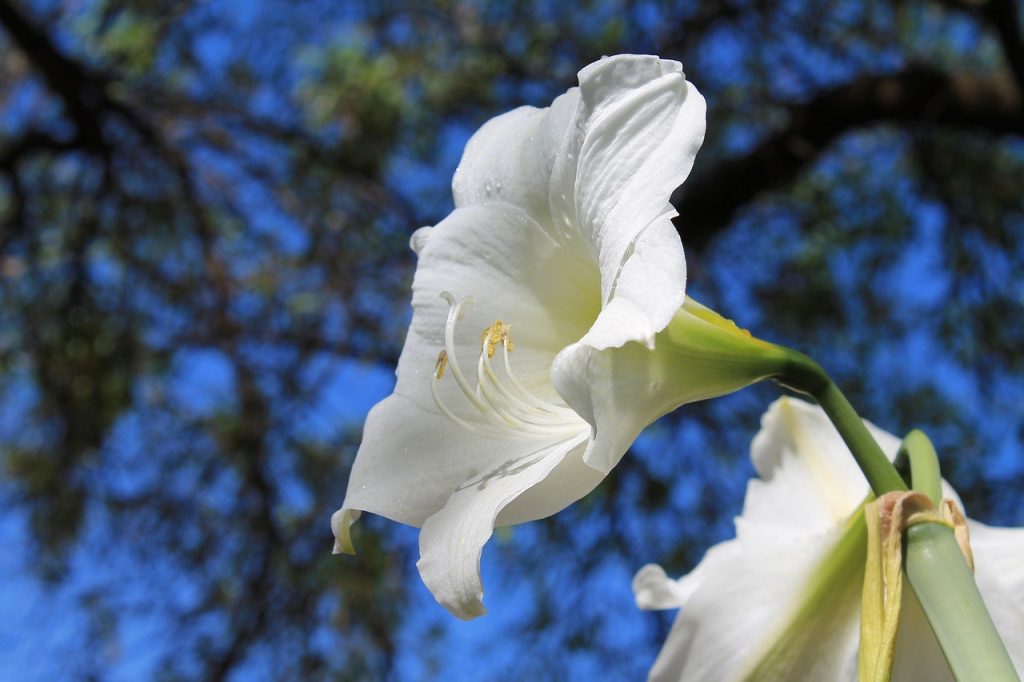
Post-Bloom Recovery
After blooming, your amaryllis needs care to recover and prepare for the next cycle:
- Remove Spent Flowers: Cut faded flowers to prevent seed formation.
- Cut Flower Stalks: Once yellow, trim stalks to 1-2 inches above the bulb.
- Support Leaf Growth: Continue watering and fertilizing, keeping the plant in bright light to allow leaves to photosynthesize and store energy Longfield Gardens.
Pro Tip: If leaves turn red, it may indicate too much direct light. Move to a spot with indirect light BBC Gardeners World.
Dormancy: The Key to Re-blooming
Dormancy is a natural rest period that enables amaryllis to rebloom:
- Induce Dormancy: Stop watering in late summer, allowing leaves to die back over 2-4 weeks.
- Store the Bulb: Place the pot in a cool (50-60°F), dark, dry location for 8-12 weeks. Check periodically for mold; treat with fungicide if necessary or discard affected bulbs.
- Avoid Disturbance: Keep the bulb in its pot to minimize stress, unless repotting is needed due to soil depletion.
Seasonal Note: In zones 9-11, amaryllis grown outdoors may not require forced dormancy, as natural winter conditions suffice Longfield Gardens.
Re-blooming Techniques
To ensure your amaryllis blooms again:
- Follow the Seasonal Cycle: Adhere to the growth, dormancy, and reawakening phases outlined above.
- Optimize Conditions: Provide bright, indirect light, proper watering, and monthly fertilization during growth.
- Repot Occasionally: Every 3-4 years, refresh the soil to replenish nutrients, keeping the bulb’s top third exposed.
- Propagate Offsets: If your bulb produces offsets, separate them during repotting and plant in smaller pots. These may take 2-3 years to bloom BBC Gardeners World.
Pro Tip: Patience is key. Smaller or stressed bulbs may skip a blooming year but can recover with consistent care.
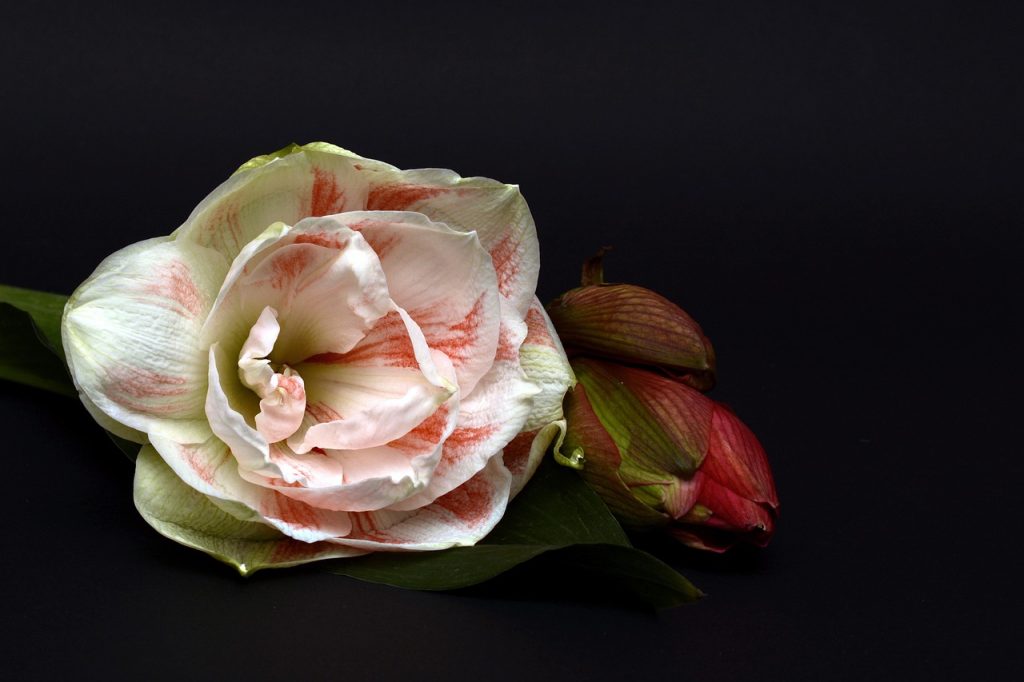
Common Mistakes and How to Avoid Them
| Mistake | Consequence | Fix |
|---|---|---|
| Overwatering | Bulb rot | Use well-draining soil, water only when top inch is dry |
| Insufficient Light | Weak growth, fewer blooms | Place in bright, indirect light |
| Cutting Leaves Early | Reduced energy for next bloom | Leave leaves until they yellow naturally |
| Skipping Dormancy | No re-bloom | Induce 8-12 week dormancy in cool, dark place |
| Planting Too Deep | Poor growth, rot | Plant with top third of bulb exposed |
Warning: Amaryllis are toxic if ingested, so keep them away from pets and children, according to Better Homes & Gardens. For a pet-safe alternative, consider exploring our guide on Spider Plant Care, as spider plants are non-toxic and easy to maintain indoors.
Troubleshooting Common Issues
- No Blooms: May result from insufficient light, inadequate dormancy, or a small/weak bulb. Ensure proper care and consider a larger bulb next season.
- Rotting Bulb: Caused by overwatering or poor drainage. Use well-draining soil and pots with holes.
- Yellowing Leaves: Normal post-bloom, but if during growth, check for overwatering or low light.
Conclusion
Mastering the care of your amaryllis plant involves understanding its seasonal needs and providing consistent attention. From planting a healthy bulb to managing dormancy and re-blooming, each step contributes to vibrant, repeat blooms. Whether aiming for a Christmas display or year-round health, these advanced practices will help your amaryllis care thrive, bringing joy to your home for years to come.